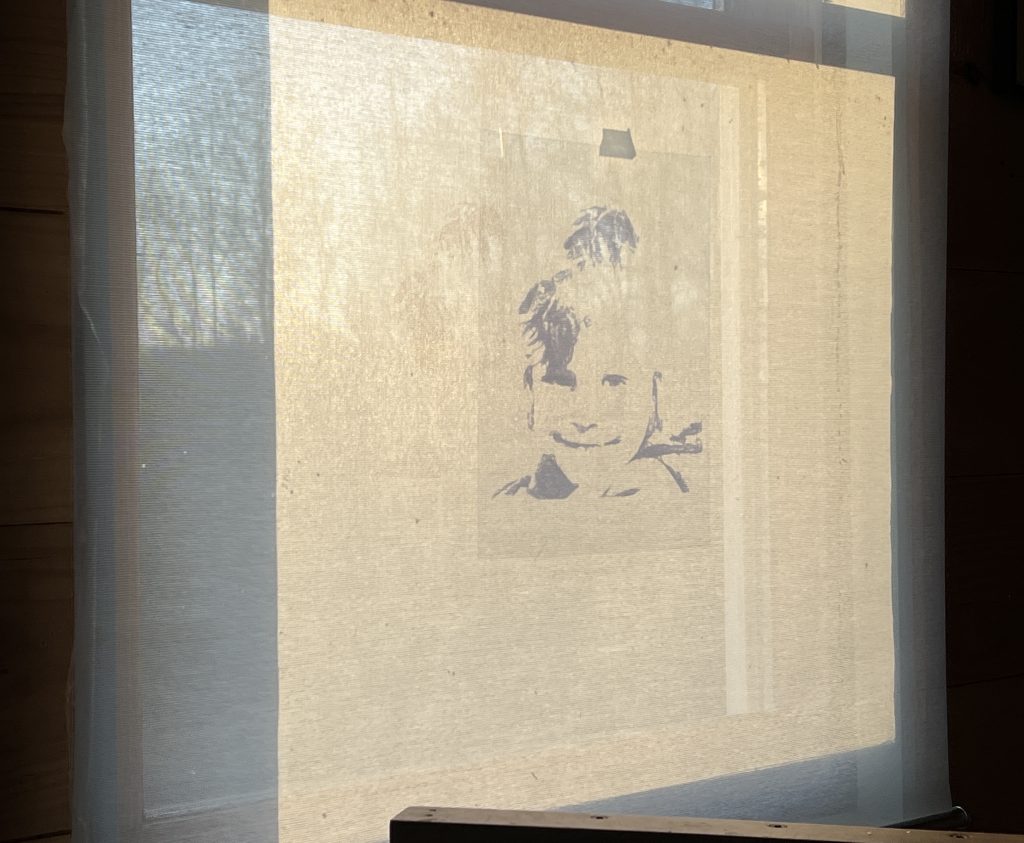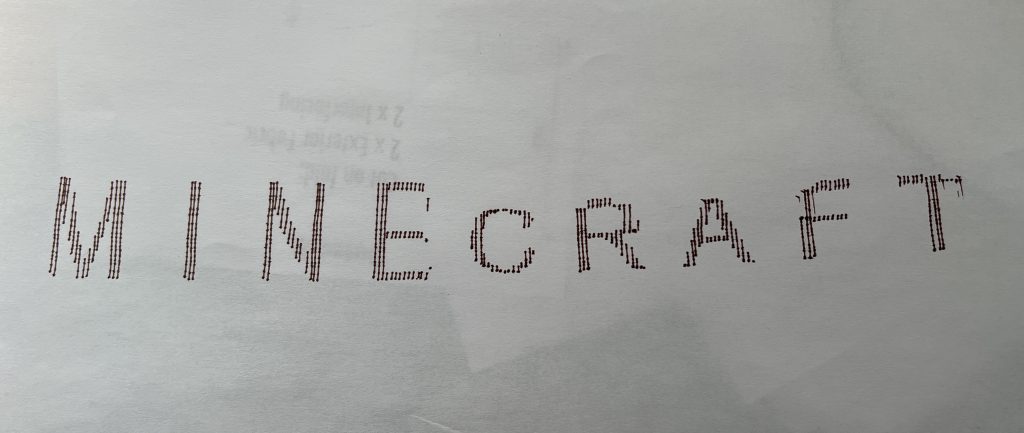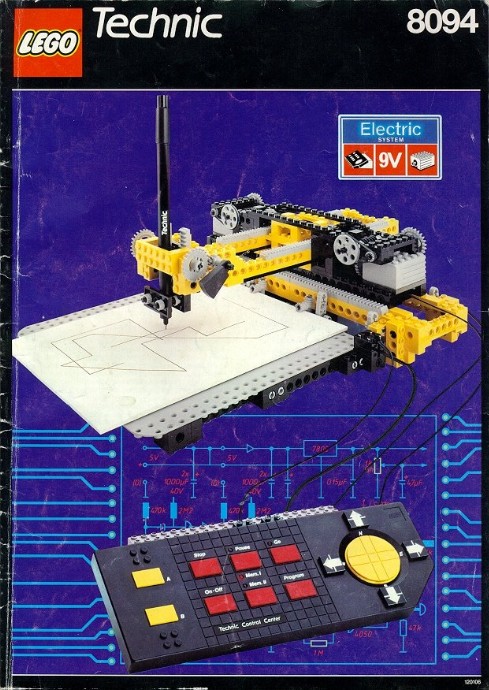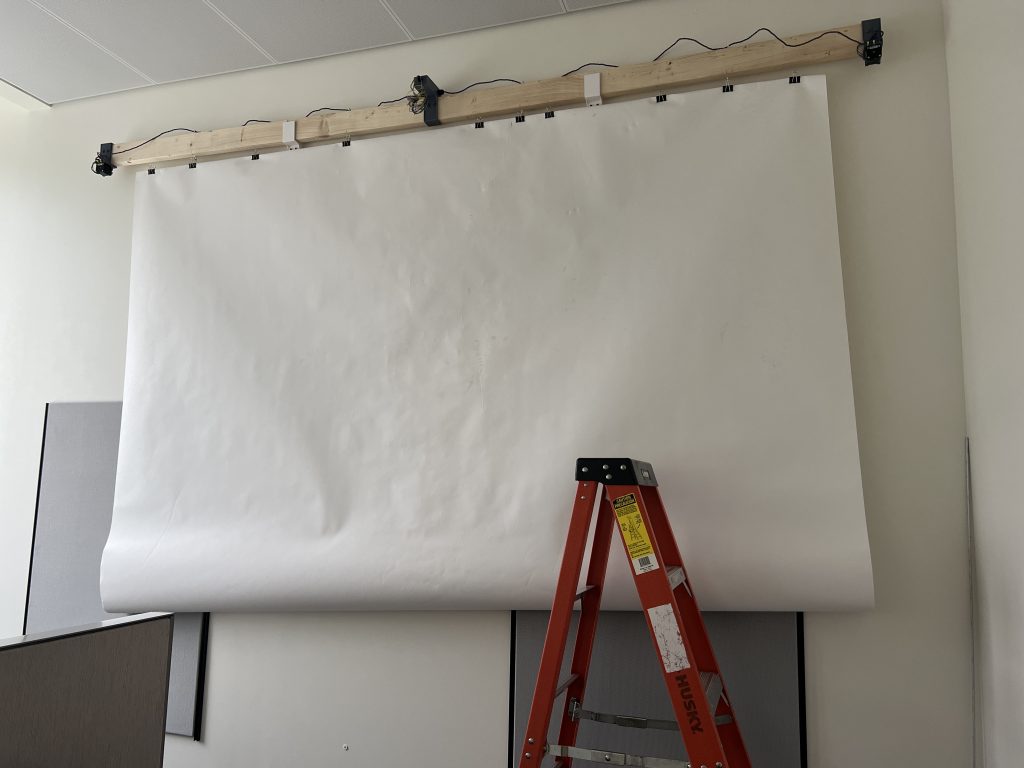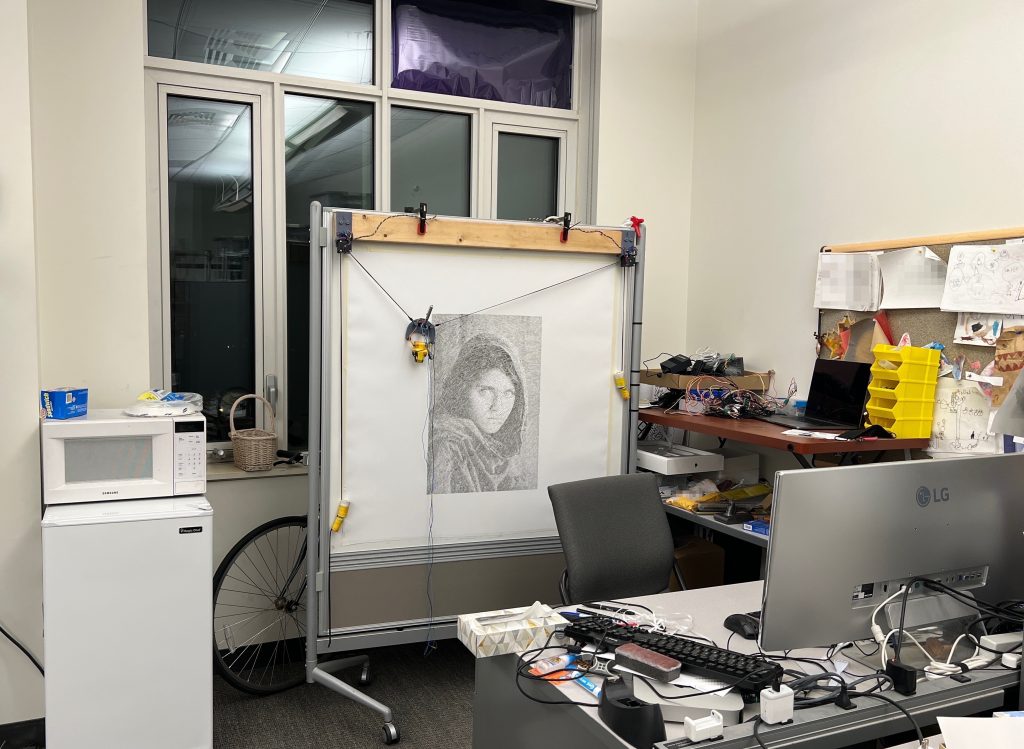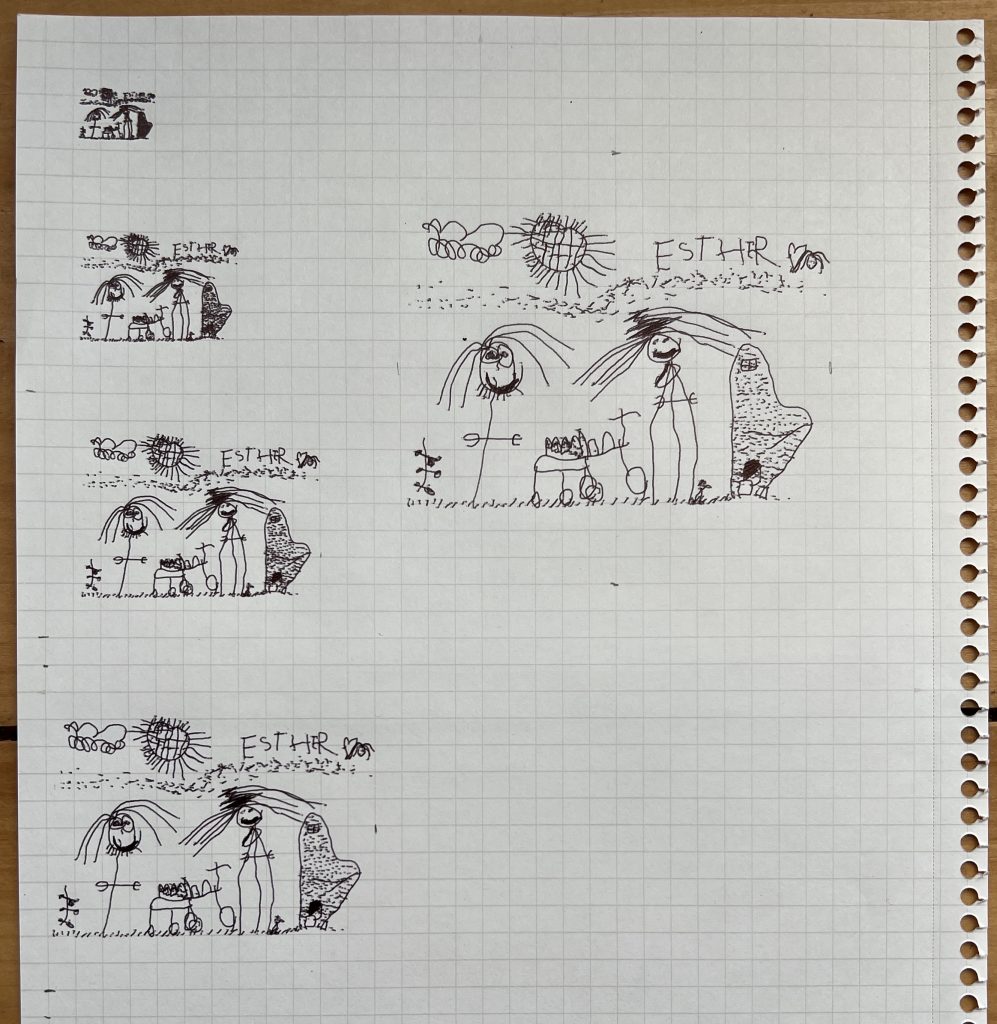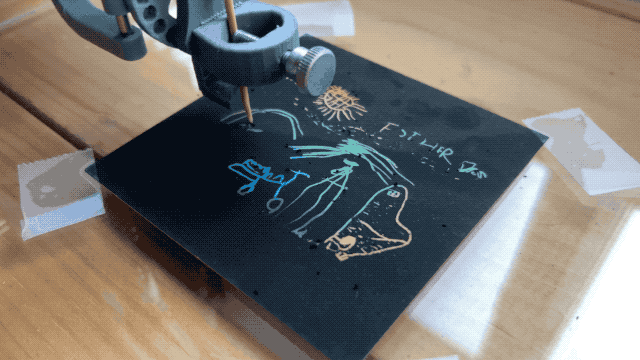I’ve been playing with sharpies on transparent paper. I’d like to make some sort of layered color deconstructible portrait with a sheet for each color overlapping each other. I failed today because of an alignment issue, but I stuck the black layer on a window. It’s very discreet and barely visible in the room, and once you notice it’s enough to see who’s on the portrait. I thought the kids might notice and would get a kick out of it.
Later the sun hit our faces so we lowered the window blind, and it hit me what this whole transparency thing was going to be all about. The reverse projection really makes it pop out. With color layers it’ll be amazing. I like the idea of something that’s barely there most of the time and pops out only with a particular alignment of the Sun.

